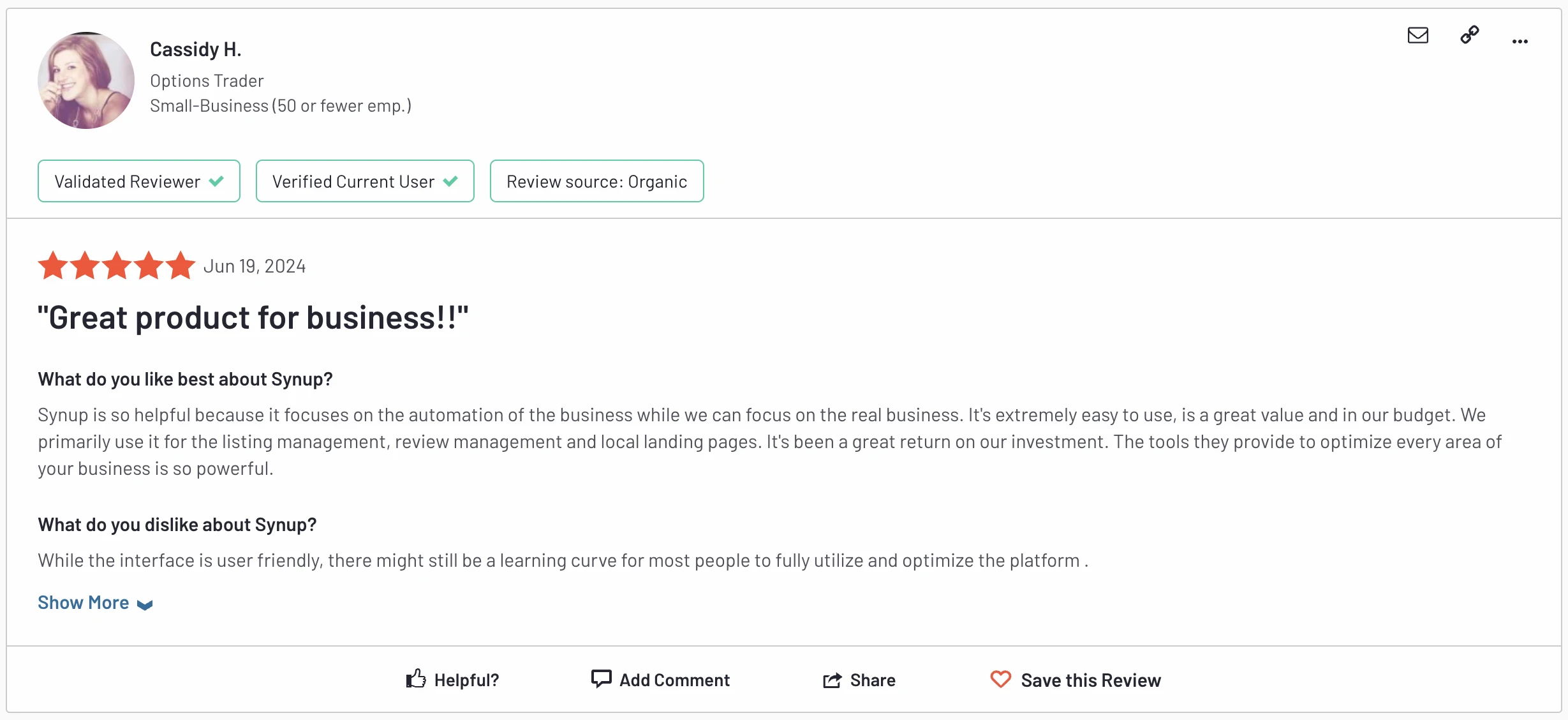Customer Advocacy 101: How to Harness the Power of Your Biggest Fans
In today’s competitive market, your best asset isn’t just your product or service – it’s your customers. Imagine having an army of loyal fans who not only love your brand but actively promote it to their friends and family. This is the magic of customer advocacy.
By leveraging the right strategies and tools, like referral program software, you can transform satisfied customers into powerful advocates who drive growth and boost your bottom line.
Ready to unlock this potential? Let’s dive into how you can harness the power of your biggest fans and turn customer advocacy into your secret weapon for success.
Table of Contents
What is Customer Advocacy?
Definition
Customer advocacy is all about putting your customers first and turning their satisfaction into a powerful marketing tool. When your customers are happy, they become your brand’s biggest cheerleaders, sharing their positive experiences and recommending your products or services to others.
By focusing on building stronger relationships and delivering outstanding experiences, you can create a network of enthusiastic advocates who help drive your business growth, build brand awareness, and improve demand generation through genuine word-of-mouth.
Customer advocacy goes way beyond simple customer satisfaction and signifies a higher level of engagement and loyalty. While satisfied customers are happy with their purchases and might come back for a repeat purchase, customer advocates take things a step further.
They are not just pleased with your product or service—they are passionate about it and excited to share their positive experiences with others. This deeper connection means they actively promote your brand, offer valuable feedback, and stand up for it when negative opinions arise.
The Value of Customer Advocacy For Your Business
Their unwavering loyalty often leads to long-term retention and repeat business, making them crucial to your growth strategy. By fostering customer advocacy, you create a community of engaged supporters who amplify your brand’s reach, credibility, and influence in the market.
Customer advocates are incredibly valuable assets for businesses because their genuine recommendations and testimonials can make a world of difference in how your brand is perceived.
When a happy customer shares their positive experience, it boosts your brand’s reputation and credibility in a way that traditional advertising simply can’t match. These authentic endorsements build trust with potential customers, making them more likely to choose your business over your competitors.
Plus, word-of-mouth referrals from loyal advocates are highly effective in acquiring new customers, often leading to higher conversion rates and lower acquisition costs. In essence, customer advocates are your brand’s best promoters, driving growth and success through their enthusiastic support.
The Role of the Customer Advocate
Building Trust and Credibility
The role of the customer advocate in building trust and credibility for your business is absolutely crucial. When customer advocates share their positive experiences, it resonates more with potential customers than any marketing campaign ever could.

According to Nielsen, 92% of consumers trust recommendations from friends and family over any other type of advertising.
These real-life testimonials and personal recommendations build a solid foundation of trust and credibility, making new customers feel confident in choosing your business. By leveraging the voices of your advocates, you can create a powerful ripple effect that enhances your brand’s reputation and draws in more customers through genuine, trusted word-of-mouth.
Providing Authentic Feedback
Providing authentic feedback is one of the most valuable roles a customer advocate plays for your business. These advocates are not just loyal customers; they are passionate about your brand and want to see it succeed. They offer genuine, constructive feedback based on their real experiences with your product or service.
This kind of feedback gives you valuable insights and can highlight areas for improvement that you might have overlooked. By listening to your advocates, you can make meaningful changes that enhance your offerings and better meet your customers’ needs.
Boosting Brand Visibility
Customer advocates also play a pivotal role in boosting your brand’s visibility, acting as enthusiastic ambassadors who spread the word about your business far and wide. Their genuine endorsements reach a broader audience and create a buzz that traditional marketing efforts often can’t match. Here are a few ways advocates increase brand visibility:
🔁 Social Media Shares: Advocates share their positive experiences on platforms like Facebook, Twitter, and Instagram, introducing your brand to their followers.
📝 Online Reviews: Writing glowing reviews on sites like Yelp, Google, and industry-specific forums helps elevate your brand’s online presence.
📢 Word-of-Mouth Referrals: Personal recommendations to friends, family, and colleagues build trust and interest in your brand.
🎬 User-Generated Content: Posting photos, videos, and stories featuring your products helps create authentic content that resonates with potential customers.
🤳🏻 Influencer-Like Promotion: Advocates often act like micro-influencers, reaching niche audiences with high engagement and credibility.
By leveraging the enthusiasm and reach of your customer advocates, you can significantly enhance your brand’s visibility and attract new customers through trusted, organic promotion.
Building a Customer Advocacy Program
What Is A Customer Advocacy Program?
A customer advocacy program is a strategic initiative that goes beyond traditional loyalty programs by actively engaging and empowering your most enthusiastic customers to promote your brand. Examples of what the program might entail include referral programs where advocates can earn rewards for bringing in new customers, exclusive access to new products or features before they launch, and special discounts or VIP events.
Additionally, customer advocates might be invited to contribute to testimonials, case studies, or social media content, further amplifying their positive experiences. By providing these targeted opportunities and rewards, a customer advocacy program not only recognizes and appreciates your loyal customers but also harnesses their passion to drive brand growth and credibility.
Finding Potential Customer Advocates
To find and connect with potential customer advocates, leveraging data is key. Start by tracking and analyzing customer interactions and feedback through your CRM system. One effective way to identify advocates is by using Net Promoter Scores (NPS). NPS measures customer satisfaction by asking how likely they are to recommend your product or service to others on a scale of 0-10. Customers who score 9 or 10 are your promoters—your potential advocates.
Use your CRM to segment these high scorers and analyze their purchase history, engagement levels, and feedback. If this sounds a little scary, remember that most CRMs, like Salesforce and HubSpot, have built-in tools that will do this for you!
If you don’t have a CRM at your disposal and can’t automate finding the ideal candidates for your customer advocacy program, a great strategy is to ask the members of your sales team and support agents for their input. Your customer success and sales team will surely have a good sense of who to approach and you could even create a working list that gets added to as more customers interact with your team.
Connecting With Potential Customer Advocates
Once you’ve identified potential customer advocates, reach out to them with personalized messages, thanking them for their loyalty and inviting them to participate in your customer advocacy program. Personalization is key here. You want to make sure that your invitation doesn’t get lost in the spam bin or get mistaken for just another blast email.
However, the most important thing to keep in mind when connecting with potential customer advocates, is that no matter how much they might love and support your business, they inevitably have busy lives. So, be sure to:
- Make it easy for them to participate
- Make it worth their while by providing them with exclusive opportunities and rewards that align with their interests and goals
For example, you could create a referral program where existing customers can refer their friends and receive rewards for successful referrals. This not only incentivizes them to spread the word but also makes them feel valued and appreciated.
In terms of rewards, consider offering gift vouchers, early access to new products, special discounts, or invitations to exclusive events. By providing these meaningful rewards, you not only encourage continued advocacy but also strengthen the relationship with your advocates, making them feel like an integral part of your brand’s success.
Developing and Implementing A Customer Advocacy Strategy
Defining Goals
Defining clear goals for your customer advocacy program is absolutely essential to ensure its success. Start by mapping out your customer advocacy vision—what do you want to achieve? How does your business define customer advocacy? Whether it’s increasing brand awareness, boosting sales, or enhancing customer loyalty, having a clear objective will guide your strategy.
Set specific, measurable goals, such as aiming to generate a certain number of referrals per month or increasing your Net Promoter Scores (NPS) by a specific percentage. Here are some other potential metrics or KPIs to consider as potential goals:
- Number of positive reviews
- An increase in your Customer Satisfaction Score (CSAT)
- Increased engagement with social media posts on a specific platform
- Increased customer retention
- Decreased customer acquisition costs
Creating Advocate Personas
Once you’ve established your strategic advocacy priorities, the next step is to create detailed advocate personas to understand who your ideal advocates are. Use data from your CRM to identify common traits among your most loyal customers. Next, segment customers into groups based on the common traits you’ve identified.
Once you have a series of clear groups, you can identify the patterns in demographics, behaviors, and preferences within each segment and develop more detailed personas. While not essential, it’s a good idea to test these personas out with real customers so you can make any necessary refinements. Finally, you’ll be able to tailor your advocacy efforts to effectively motivate and engage the right customers, ensuring your program drives meaningful results.
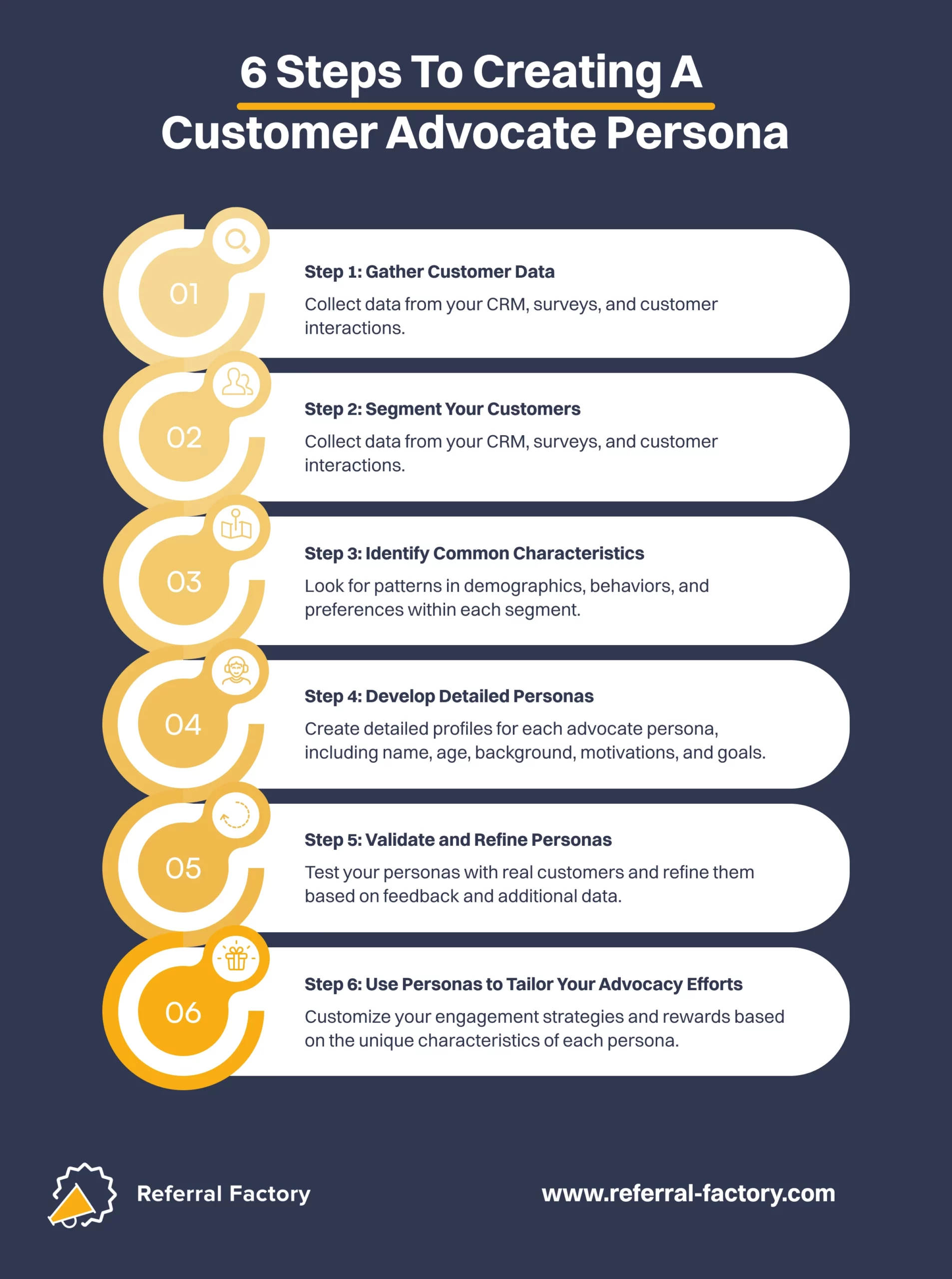
Crafting Avenues for Customer Advocacy
Testimonials and Reviews
Creating opportunities for customer advocates to provide testimonials and reviews is essential for amplifying your brand’s reach and credibility and for getting valuable customer feedback. As I mentioned earlier, start by making it easy for customers to leave testimonials on your website or through follow-up emails after a purchase or a completed service.
You can then highlight these testimonials on your homepage, product pages, and marketing materials to showcase authentic customer experiences. You can also create dedicated testimonial submission forms or use third-party review platforms like Trustpilot or Google Reviews to gather and display feedback.
It’s essential to make it worthwhile for customer advocates to offer testimonials, as their genuine feedback can significantly boost your brand’s credibility and attract new customers. However, it’s crucial to navigate the legality of incentivizing reviews carefully. While it’s not illegal to offer incentives, transparency is key. You must disclose that the testimonial was incentivized to maintain trust and comply with regulations (at least, in the USA). Offering rewards such as discounts or exclusive access is effective, but always ensure that your advocates clearly state they received an incentive. This approach keeps your advocacy efforts both ethical and impactful.
Social Sharing
Encouraging social sharing is another great avenue for advocacy to consider including as part of your customer advocacy programs. The key is to provide shareable content, such as blog posts, infographics, and videos, and include social sharing buttons on your website and in your emails to make sharing effortless. This visibility boosts your brand’s reputation and draws in new customers through trusted recommendations.
You may be starting to see a key pattern emerge at this stage… once you’ve made it easy for your customer advocates to participate, the next step is to make it worth their while. One effective strategy is to run social media contests where participants can win exclusive products or special experiences by sharing their positive experiences with your brand. This not only encourages sharing but also generates excitement and engagement among your advocates and their followers.
Referrals
The top performing customer advocacy strategy you can implement is a client referral program. On average, around 76% of customers are willing to refer a friend if they have had a good experience with your business — that’s a huge percentage of your customer base! And again, there are two key principles for success when it comes to referral marketing as an avenue for customer advocacy.
Firstly, make it as easy as possible for a loyal customer to refer their friends. This is best done with referral links, which provide all the relevant information and allow the friends to take action if they’re interested (so it doesn’t feel spammy). All customer advocates need to do then is share their referral link with their networks or social media followers.
Secondly, make it worth your customer advocates’ time and trust by offering a reward for a successful or converted referral. There is, however, an extra way you can incentivize your advocates with a referral program… by rewarding their friends too! Data shows double-sided referral programs are best, where both the existing happy customers and their friends get rewarded! This is because of the social clout that comes with being able to offer your friends something special and is a great reminder that not all rewards have to be monetary!
Measuring Success and Optimizing the Program
Customer Satisfaction and Retention
To gauge the success of your customer advocacy strategy, it’s vital to measure outcome metrics like revenue influenced by advocates and their overall influence rating. Tracking these metrics helps you understand the direct impact your advocates have on your bottom line and their effectiveness in promoting your brand.
Additionally, regularly collecting feedback from your customer advocates allows you to identify and address any issues they may encounter. This feedback is invaluable for improving customer retention, as it highlights areas where you can enhance the customer experience.
By analyzing these metrics and feedback, you can make informed adjustments to your program, ensuring it remains effective and continues to foster strong, lasting relationships with your advocates. This approach not only boosts customer satisfaction but also drives sustained growth for your business.
Customer Advocacy Software
In today’s digital age, leveraging technology is essential for implementing and scaling effective customer advocacy programs. Customer advocacy software provides the tools you need to identify, engage, and reward your most loyal customers seamlessly. These platforms help streamline processes like tracking referrals, collecting testimonials, and managing reward programs, making it easier than ever to turn satisfied customers into enthusiastic advocates.
By using dedicated customer advocacy software, businesses can harness the power of their biggest fans to drive growth, increase brand visibility, and foster long-term loyalty. Let’s explore how this technology can transform your customer advocacy efforts.
Referral Factory
💸 Entry Level Price: $95/month
⭐️ G2 Review Score: 4.9/5
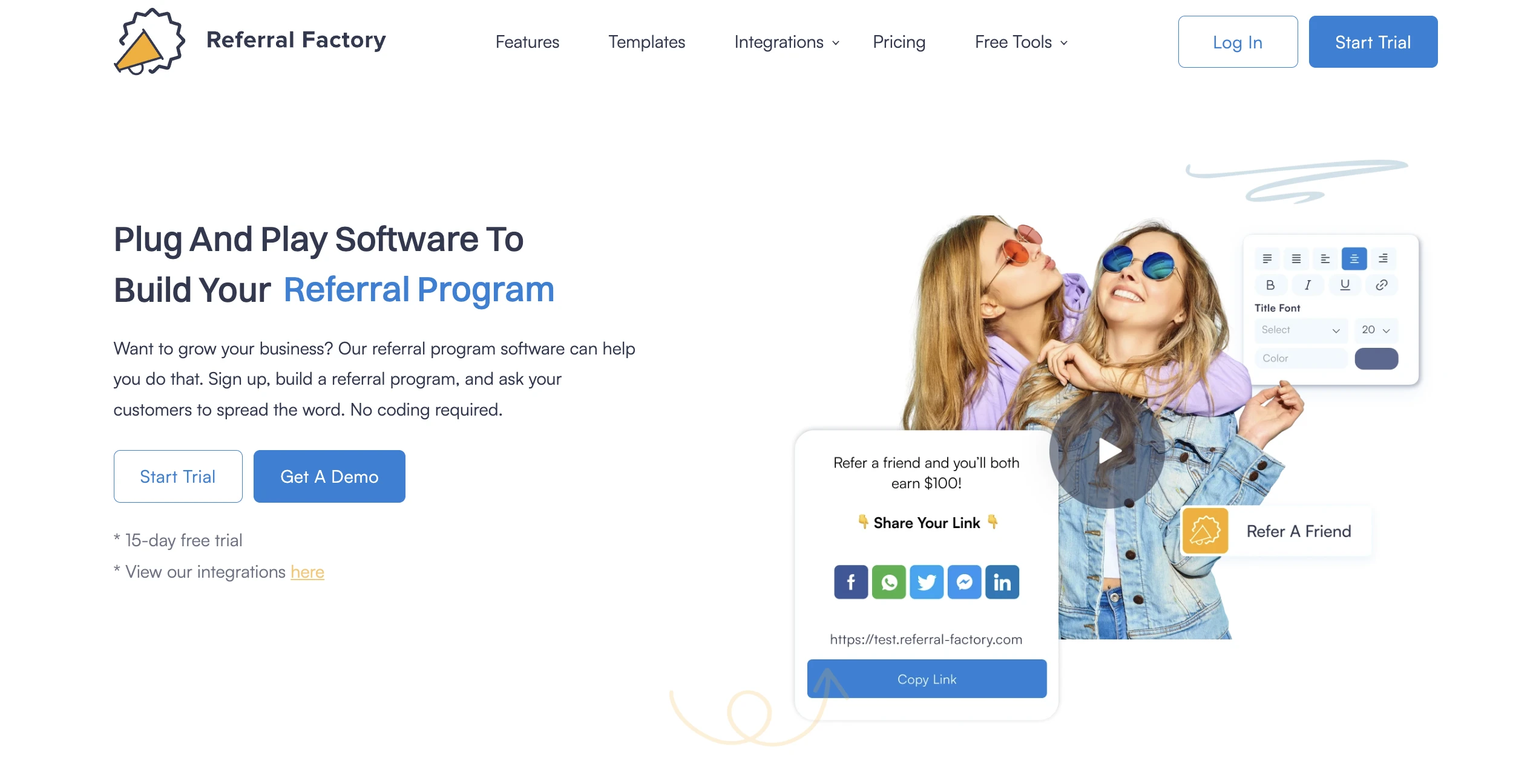
When it comes to implementing a successful customer advocacy program, Referral Factory stands out as a top choice for businesses of all sizes. Priced competitively with entry-level plans starting at just $95 per month, Referral Factory offers an accessible solution for companies looking to leverage the power of customer advocacy without breaking the bank. This affordability, combined with its robust feature set, makes it an ideal tool for businesses eager to transform satisfied customers into brand advocates.
Users frequently praise Referral Factory for its ease of use, comprehensive features, and exceptional customer support, highlighting its effectiveness in driving successful referral and advocacy campaigns.
One of the standout features of Referral Factory is its ability to create and manage custom referral programs with ease. The platform allows businesses to design referral campaigns tailored to their specific needs, track the performance of these campaigns in real-time, and reward customer advocates for their efforts.
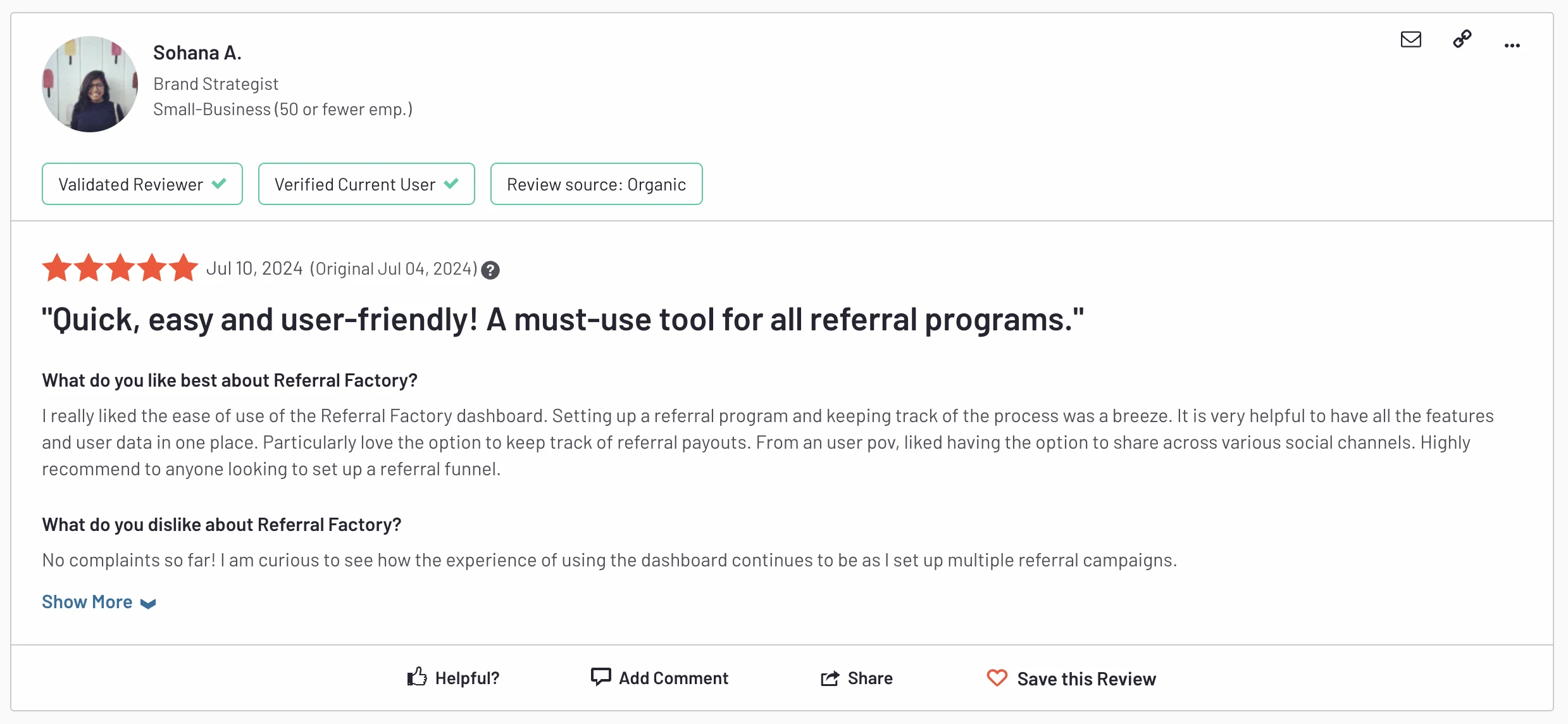
Birdeye
💸 Entry Level Price: Custom Pricing
⭐️ G2 Review Score: 4.8/5
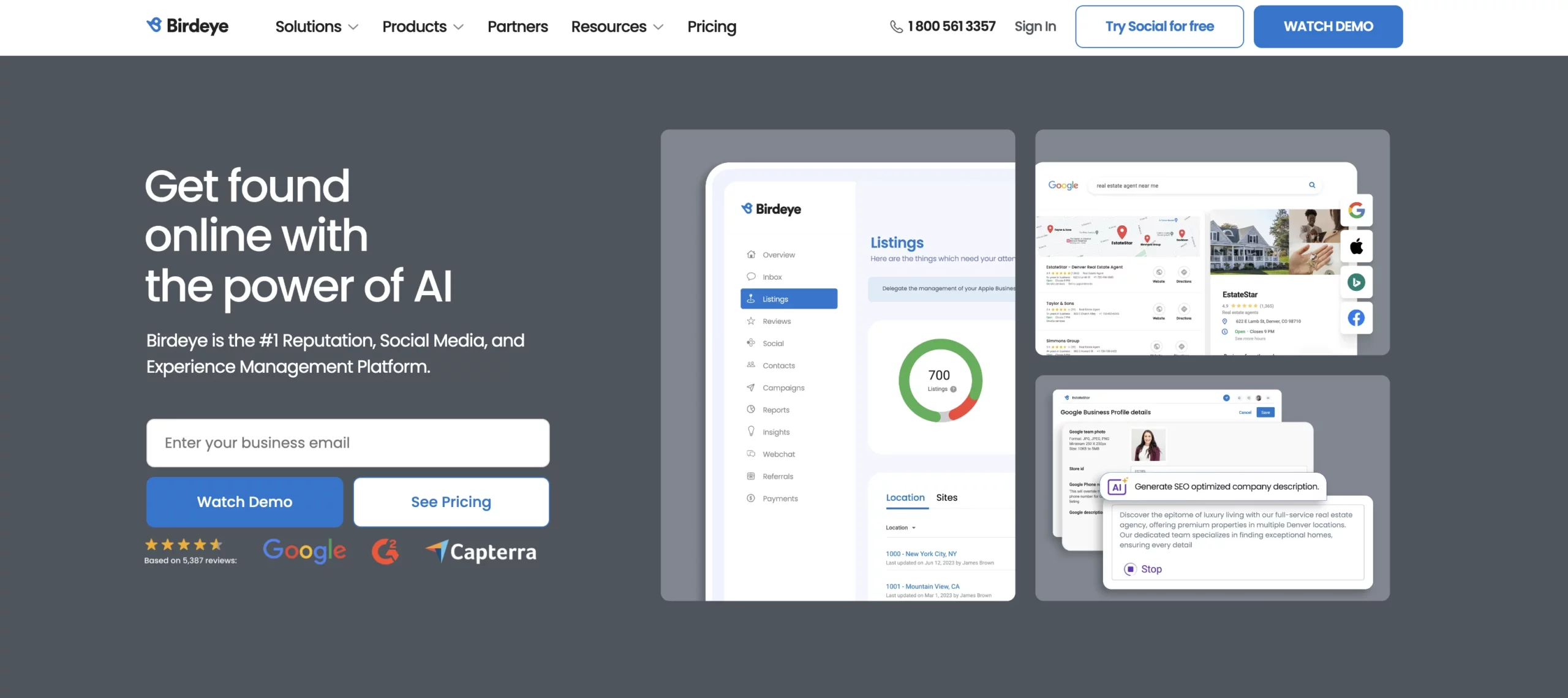
Birdeye is a leading customer advocacy software designed to help businesses manage and amplify their customer feedback and reputation.
Customers frequently highlight Birdeye’s user-friendly interface, comprehensive feature set, and excellent customer support. These attributes make Birdeye a reliable choice for businesses aiming to streamline their customer advocacy programs.
One of the key features of Birdeye is its ability to collect and manage customer reviews from various platforms, ensuring that businesses maintain a positive online reputation. The software automates the review collection process, making it easy for customers to leave feedback and for businesses to respond promptly. This proactive approach to managing reviews not only improves customer satisfaction but also boosts the credibility and visibility of the brand.
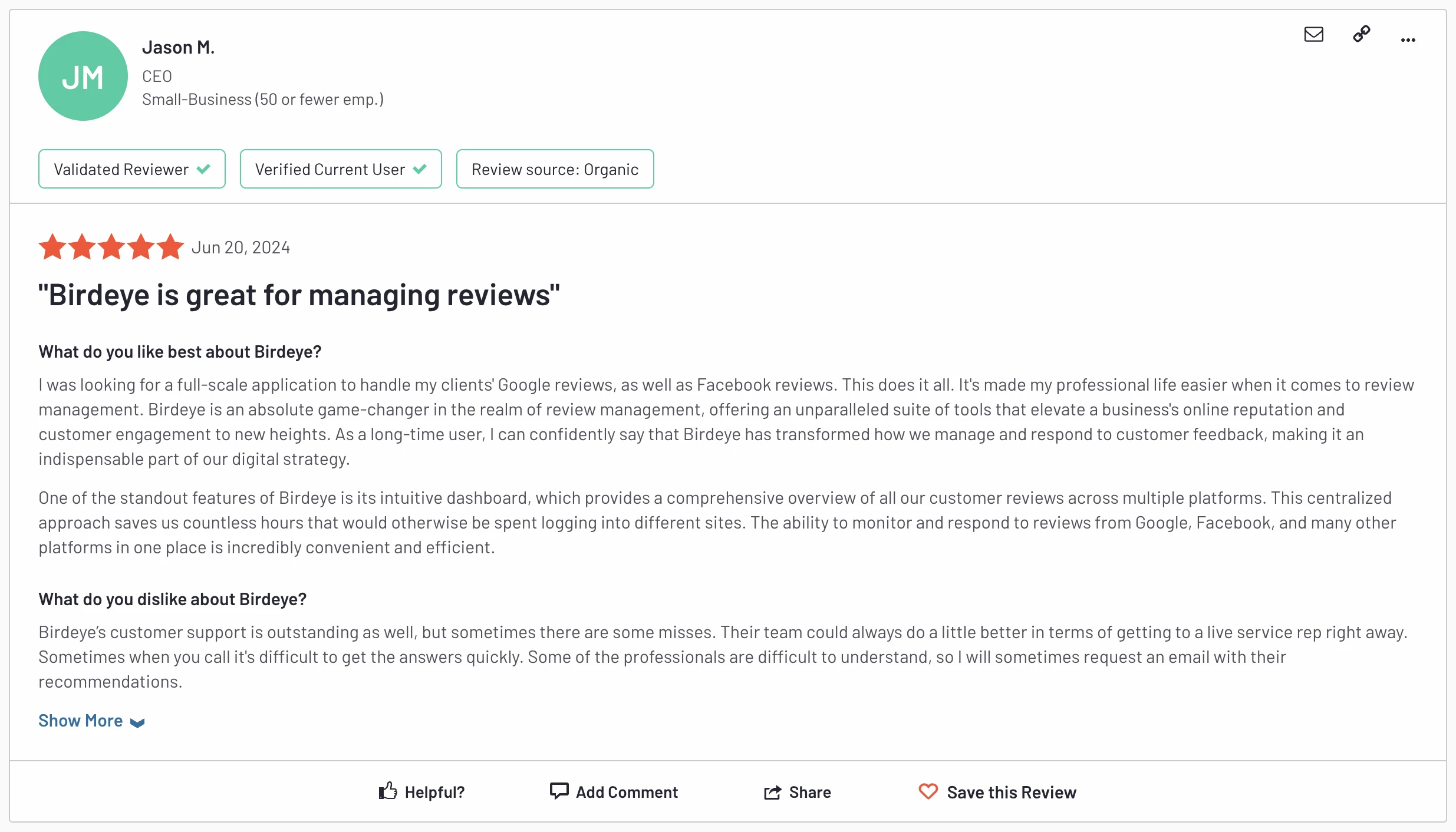
Synup
💸 Entry Level Price: Custom Pricing
⭐️ G2 Review Score: 4.5/5
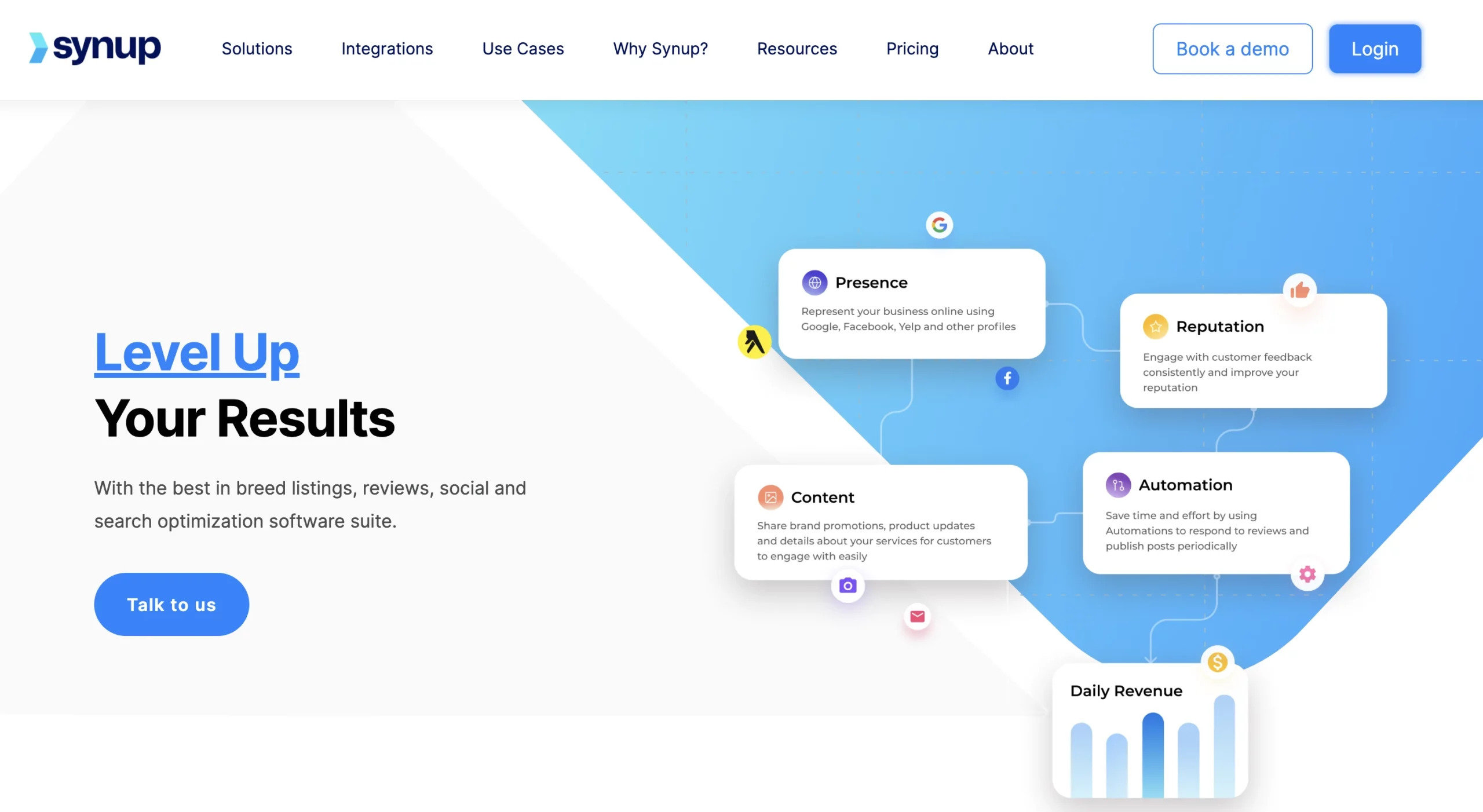
Synup is an all-in-one customer advocacy software designed to help businesses manage their online presence and reputation with ease. The platform’s capabilities in managing online listings, reviews, and customer feedback make it a popular choice for businesses aiming to build a strong online reputation and foster customer advocacy.
One of Synup’s standout features is its ability to manage and optimize online listings across various directories and search engines. This ensures that businesses maintain accurate and up-to-date information, which is crucial for attracting and retaining customers. By centralizing the management of listings, Synup saves businesses time and effort, allowing them to focus on delivering exceptional customer experiences.
